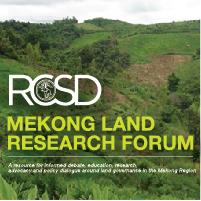Resource information
The highlands of mainland Southeast Asia have famously been the locus of “Zomia,” polities resistant to control by lowland nation-states, but this relative resilience has been due to their marginality. However, as even remote borderlands connect to the market economies of what has been labeled the “Greater Mekong Subregion,” these semi-independent polities are trying to transform themselves from isolated drug enclaves into regional paragons of economic modernity labeled “Special Economic Zones.” The main actors in this transformation are ethnic Chinese migrant capitalists who embrace the economic rhetoric of mainland China's “growth model” to create respectability and to evoke images of a cosmopolitan future as they build casinos in the rainforest. The zones’ claim to be the vanguard of modernity rests on two mutually contradictory sets of symbols: a mimicry of Chinese state paraphernalia designed to conjure up the efficacy of a strong developmental state, and the discourse of freedom from state control. This article examines the transformation of zones of political and criminal resistance into zones of economic development from a historical perspective of changing practices of sovereignty and shifting understandings of development.


